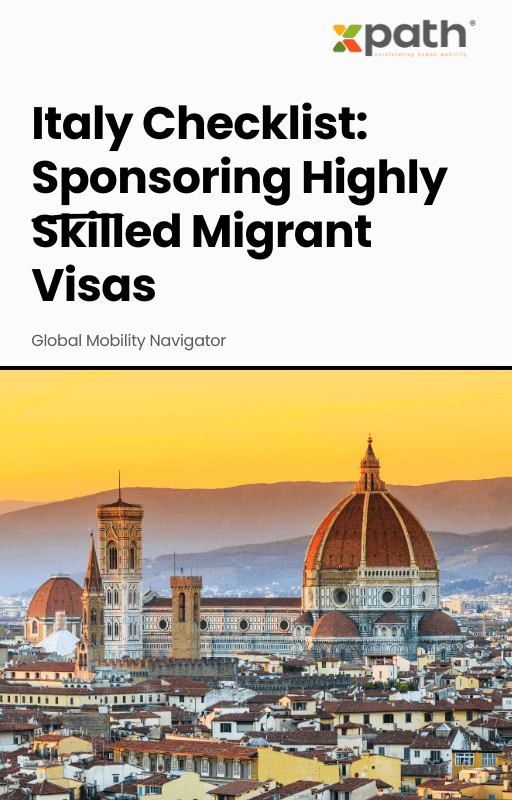Italy Checklist: Sponsoring Highly Skilled Migrant Visas
Grab a copy of a guide to international employee relocation
View E-bookThe dynamic evolution of the job market alongside technological advancements have resulted in a widespread skill gaps affecting organizations globally. Conventional qualifications may not consistently match the specific skills and competencies demanded by various industries. To achieve growth and success, businesses require a workforce capable of swiftly adapting to emerging challenges and technologies. In this context, global mobility assumes a vital function in talent management.
In recent years, there has been a notable rise in skills-based hiring as employers actively pursue candidates with the necessary talents and capabilities to excel in a swiftly changing job market. By giving precedence to skills over conventional qualifications, employers can streamline their recruitment procedures, ensuring that their workforce stays flexible and adaptable to market fluctuations.
The competition for talent has surged to unprecedented levels, leaving employers grappling to secure individuals with the requisite skills. With skill shortages prevalent across various regions and sectors, companies are turning to global mobility as a solution to address these gaps. A survey conducted by Manpower Group reveals that over half of the surveyed businesses are open to international hires, with a considerable portion intending to provide increased flexibility in employee work locations.
The benefits of global mobility can be felt at every stage of the talent management lifecycle. From sourcing and recruiting talent to employee development, retention, and succession planning, global mobility plays a pivotal role in shaping a competitive and successful workforce.
Global mobility can be essential in building an attractive employee value proposition (EVP) for prospective employees. By advertising benefits such as travel allowances, relocation packages, and international progression opportunities, companies can enhance their reputation and attract top talent, particularly from younger generations who are often more mobile.
Once a candidate accepts an offer, it is crucial to provide support during the transition period, especially for candidates who have been posted abroad. Regular check-ins, mentorship programs, and surveys can help new hires settle in, make connections, and address any early challenges they may face.
Performance management becomes crucial as employees settle into their roles. Ensuring those addressing skills gaps in new locations deliver results aligned with business goals is essential.
The development phase offers opportunities for employees to acquire new skills and enhance their capabilities. Global mobility can provide moments for upskilling, either through self-directed learning, local training courses, or exposure to different markets and cultures. It is crucial to align development goals with the skills the business needs and the direction the employee wants to take in their career.
Global mobility aids talent retention in competitive markets, demanding careful planning and support. While international opportunities attract ambitious employees, ensuring alignment with skills and circumstances is crucial. Training, coaching, and mentoring prepare employees for new challenges.
Repatriation is a crucial but often overlooked part of the global mobility process. Planning and communication are key to ensuring a smooth transition back to the home country. Handovers, reintegration support, and meaningful roles that make the most of employees’ international experience are necessary to prevent reverse culture shock and maintain employee satisfaction.
Collaboration among stakeholders—governments, schools, businesses, and candidates—is vital for bridging the skills gap. Prioritizing talent management, upskilling, and inclusivity helps narrow the divide between employer needs and workforce skills.
An effective global talent strategy aligns with company goals. By integrating global mobility, businesses reap benefits like talent recruitment, retention, diversity, and fostering a strong leadership pipeline.

Italy Checklist: Sponsoring Highly Skilled Migrant Visas
Grab a copy of a guide to international employee relocation
View E-book